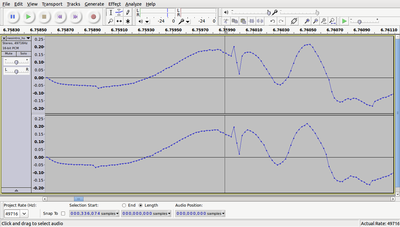First post, by DjLc
- Rank
- Newbie
I've recently started to record some of my favorites OPL2/3 tunes.
My recording setup is composed by:
1. 486DX33 16MB with CT3910 (playing computer with SPDIF output)
2. HP DC7900 with SBLIVE! (CT4620) under Win 7. Im using the KX drivers and SoundForge to record the SPDIF In.
As you see in the screenshot, the spdif in report a 44098Hz signal from the CT1390. I'm recording in 48kHz/24bits because of the internal resampling of the SBLive!
The biggest issue for me is thoses horribles "clics" and "cracks". I can't stand them.
I've got those on multiple differents cards, like a real 1987's AdLib, CT1350B or even SB16 or Mediavision Pro Audio 3D (ymf262).
I've made a wav capture from last dosbox cvs build with the demo of Loom (introduction music) and another capture with the CT3910. Here's a sample shot:
I was surprised to see the same behavior in dosbox. I don't know if it's an hardware issue or if it can be corrected/minimized. I've tried the plugins suite from Izotope or Waves to remove thoses "clics": it's ok when there's no percussion 🙁 and sometimes it simply doesn't work.
Questions:
1. Do the recording settings are correct ? Or do i need to record in 44.1kHz like the input signal.
2. The volume output of CT3910's spdif is REALLY low for somes games. What normalization settings do i need to use ? in music production i tend to use a -20dbfs.
3. How to remove/minimize thoses "clics" ? Maybe i don't need to correct it and leave as is for better "original" sounding ?
Thanks


